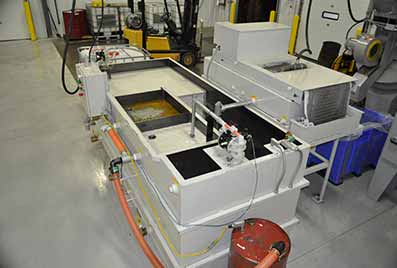
Without processing metal scrap and recycling cutting fluids in-house, metalworking operations do not get the maximum value for their chips from the scrap dealer and cutting fluids are substantially wasted. However, with the right scrap and fluid handling equipment metal scrap can be a great source of revenue and recycled fluids can drastically cut the costs of new fluid purchases, resulting in great savings.
With the addition of a briquetter system, one aerospace manufacturer earned 25 cents more per pound for their aluminum scrap. This scrap produced 90% solid pucks when condensed which were then able to more fully maximize the 40,000-lb. capacity trailer used for haul-away.

Another example is with an automotive manufacturer who installed a wringer/centrifuge to remove oil from steel scrap. This solid/liquid separation system enabled the operation to recover 98% of its oil for reuse and also increase the scrap value going to the recycler by 28%.
An in-house machine side or centralized fluid recycling system filters spent fluids and removes contaminates so that they can be repurposed back into the process, lowering haul-away costs and significantly reducing new fluid purchases.

As an example, an Ontario, Canada-based aerospace manufacturer replaced an existing coalescence system with a new centralized fluid recycling system. As a result, its new coolant purchases decreased by 75% and significantly lowered haul-away costs to dispose of the dirty fluid.
One example of increased efficiency in the shop is a parts manufacturing operation who installed new conveying equipment to reduce its downtime. By doing so, they were able to cut the time needed to complete a die change from 30 to 12 minutes.

Metal scrap processing, fluid recycling, and conveyor systems all are proven to help metalworking operations increase revenue, create efficiencies, and reduce waste. To identify the best system that will produce maximum benefits in your operation, consult with an experienced PRAB Metal Scrap and Fluid handling expert.